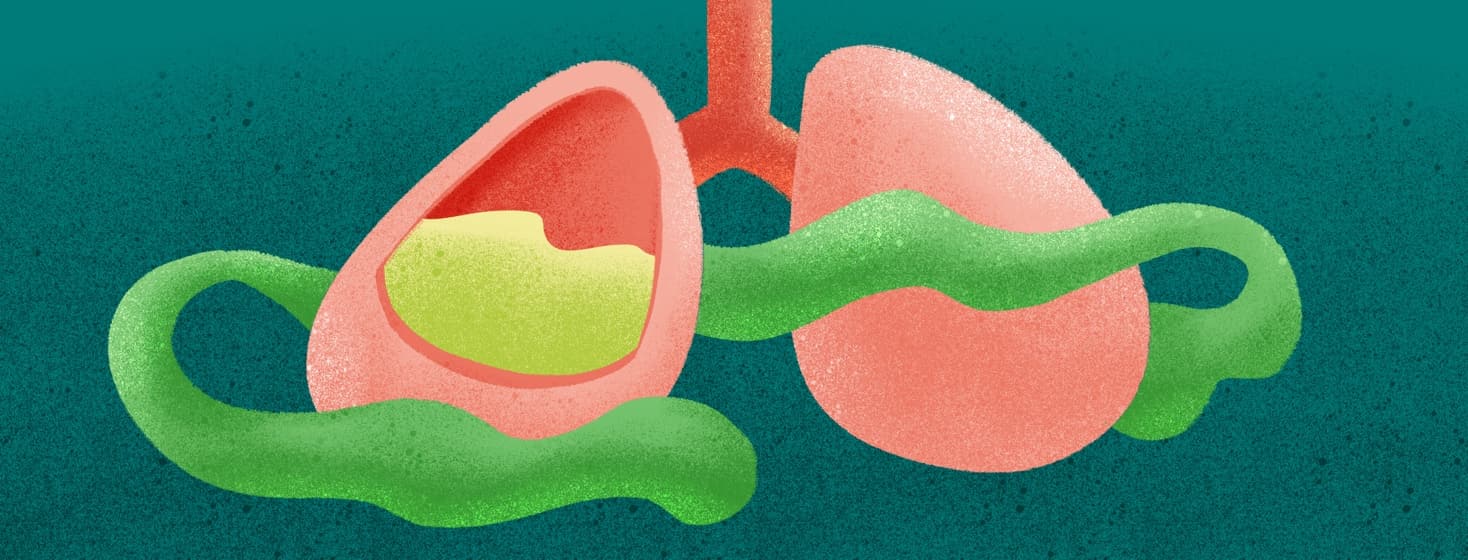What Is Cystic Fibrosis?
Cystic fibrosis is another chronic lung disease. Its symptoms may mimic asthma symptoms. Sometimes it occurs alongside asthma. So, what is cystic fibrosis? Here’s what you need to know.
What is cystic fibrosis?
“Woe to that child which when kissed on the forehead tastes salty. He is bewitched and soon must die.”
That’s an 18th century saying by the medical community. This probably came from parental accounts that their infant child's skin tasted like salt when kissed. These infants often suffered from severe shortness of breath. They ate little, and therefore were poorly nourished. They also coughed a lot, and produced mucus that was colorful, thick, sticky, and crusty.1
History of CF
It was rare for these kids to live longer than six months. Their little bodies had trouble bringing this thick mucus to their upper airways. So, they had a hard time coughing it up. This created a breeding ground for germs in their lungs. It predisposed them to developing a severe lung infection. And this would end up taking their lives. Rarely did they live longer than six months.
Back then there was no name for this rare disease. So, cystic fibrosis was often misdiagnosed as something else, such as whooping cough, chronic bronchitis, or asthma. It was not officially described for the medical community until 1933. This report described a disease of the pancreas caused by vitamin A deficiency. This disease resulted in a grim prognosis, with death caused by severe lung disease. A report published five years later described the same disease. This time it was given a name: cystic fibrosis.1,2
Recent developments
Researchers have learned a ton about cystic fibrosis (CF) since 1938. They know it’s a genetic disorder. They have identified the gene responsible, called the cystic fibrosis transmembrane conductance regulator (CFTR). A mutation in the CFTR gene prevents chloride from traveling through epithelial cell walls. These are specialized cells lining walls of organs, such as your skin, intestinal tract, pancreas, and lungs. This results in mucus and sweat that contains more salt than normal, and causes mucus to be thick and sticky.3,4
Mucus is normally thin and moist. It acts as a natural lubricant. Thick and sticky mucus gets stuck in ducts and tubes inside the body. Most notably, it gets stuck in the pancreas and airways inside the lungs. Due to disease of the pancreas, their body’s are poor at absorbing fat, vitamin A, B, D, and K. It becomes hard to stay well-nourished. This causes them to be skinny no matter how much they eat. It may cause diabetes.3
Cystic fibrosis vs asthma
People diagnosed with CF also have CF bronchiectasis. This is when airways become chronically dilated. This makes it difficult to bring up and cough up secretions. This is exacerbated by thick and sticky mucus indicative of CF. Germs can get trapped in this mucus. This increases their risk for frequent respiratory infections.5
Like asthma, bronchiectasis can flare-up. This usually occurs when these patients develop respiratory infections. Thick and sticky mucus can obstruct airways and cause airflow limitation. Symptoms include shortness of breath, chest tightness, and coughing.3
Cystic fibrosis and asthma are comorbidities
Up to 37% of patients with cystic fibrosis also have asthma. This is when airways become hypersensitive to asthma triggers, such as your common allergens. These triggers cause muscles surrounding airways to spasm. It also causes increased sputum production. Both of these can obstruct airways and cause airflow limitation. Symptoms include shortness of breath, chest tightness, wheezing, and coughing.6
If untreated, these symptoms can become severe.
Likewise, it may also present with chronic sinusitis, nasal polyps, and various digestive complications. So, gaining control of CF also involves gaining control of all of these.7
Along with asthma, CF also presents similar to COPD. It's chronic and progresses over time.
What is the treatment for CF?
Treatment involves medicines asthmatics use:5
- Bronchodilators. These open airways and keep them open long term.
- Corticosteroids. This may include inhaled or oral corticosteroids to reduce airway inflammation
- Leukotriene antagonists. These block leukotriene to control allergic asthma.
Treatment may also involve medicine to thin secretions and antibiotics to treat and prevent lung infections.3
Another treatment that often proves helpful is chest physiotherapy. This may involve having someone clap on their chest and back. It may also involve blowing into devices such as Acapellas. Both of these send vibrations that help enhance secretion clearance.3
Thanks to modern wisdom and treatments, people with CF are living better and longer than every before. Just think, in 1962 the life expectancy was only 10 years old. By 2000, this life expectancy increased to 32 years of age. Today, many people with CF are living well into their 40's and 50's.5,6
What to make of this?
So, cystic fibrosis may present similarly to asthma. Also, many people with CF also have asthma. For this reason, anyone diagnosed with CF may also be tested for asthma. Likewise, anyone presenting with poorly controlled or severe asthma may also be tested for CF.
Cystic-Fibrosis.com

Join the conversation